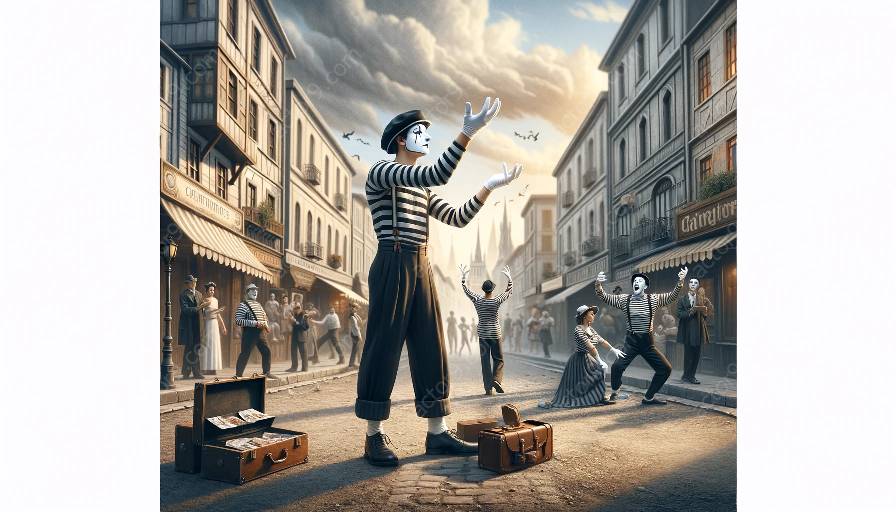Mime and physical comedy bring unique forms of expression to traditional theater performances, enriching storytelling through the art of body language and non-verbal communication. In this topic cluster, we will delve into the ways in which mime and physical comedy can be seamlessly integrated into traditional theater, emphasizing the importance of body language and expression in mime while exploring their contributions to the art of theater.
Exploring Body Language and Expression in Mime
Body language and expression serve as the cornerstone of mime, allowing performers to convey intricate emotions, narratives, and humor without the use of words. Through subtle gestures, facial expressions, and movements, mime artists create powerful connections with audiences, often transcending language barriers to evoke universal themes and experiences.
This form of theatrical storytelling relies heavily on the precise control and manipulation of the body, requiring performers to master the art of physical expression. By understanding the nuances of body language and the impact of subtle movements, mime artists can captivate audiences and convey intricate narratives that resonate on a deeply human level.
Unveiling the Art of Mime and Physical Comedy
Mime and physical comedy share a symbiotic relationship in the realm of theater. While mime focuses on the art of silent storytelling and non-verbal communication, physical comedy infuses humor and levity through exaggerated movements, slapstick elements, and comedic timing. When seamlessly integrated, these two forms of expression can elevate traditional theater performances, adding layers of depth, emotion, and entertainment.
Physical comedy, often characterized by exaggerated facial expressions, playful interactions, and comedic sequences, complements the visual storytelling aspect of mime, enhancing the overall theatrical experience. These elements create a dynamic interplay between silence and humor, allowing performers to engage audiences on multiple sensory levels, triggering laughter, empathy, and introspection.
Integration into Traditional Theater Performances
The integration of mime and physical comedy into traditional theater performances requires a delicate balance between precision and spontaneity. It involves the meticulous choreography of movements, the artful use of props and visual cues, and the harmonious synchronization of performers' expressions and actions.
By seamlessly weaving mime and physical comedy into traditional theater, directors and actors can bring a fresh dimension to classic plays, musicals, and dramatic productions. This integration opens doors to innovative storytelling, allowing for the exploration of themes, emotions, and narratives in a visually captivating and emotionally resonant manner.
When carefully integrated, mime and physical comedy contribute to the creation of immersive and unforgettable theatrical experiences. Embracing the power of non-verbal communication, these elements enhance the richness of storytelling, fostering connections with audiences that transcend linguistic boundaries.
In Conclusion
As we unravel the potential of integrating mime and physical comedy into traditional theater performances, we recognize the profound impact of body language and expression in mime. Through the harmonious fusion of these elements, theater evolves into an art form that transcends spoken dialogue, speaking to the heart of human experience through the universal language of movement and emotion.


























